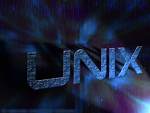Linux is free.
You can install a complete Unix system at no expense other than the hardware (of course).
Understanding the Linux Kernel 9
Linux is fully customizable in all its components. Thanks to the General Public License (GPL), you are allowed to freely read and modify the source code of the kernel and of all system programs. Several commercial companies have started to support their products under Linux, most of which aren't distributed under a GNU Public License. Therefore, you may not be allowed to read or modify their source code.
Linux runs on low-end, cheap hardware platforms.
You can even build a network server using an old Intel 80386 system with 4 MB of RAM.
Linux is powerful.
Linux systems are very fast, since they fully exploit the features of the hardware components. The main Linux target is efficiency, and indeed many design choices of commercial variants, like the STREAMS I/O subsystem, have been rejected by Linus because of their implied performance penalty.
Linux has a high standard for source code quality.
Linux systems are usually very stable; they have a very low failure rate and system maintenance time.
The Linux kernel can be very small and compact.
Indeed, it is possible to fit both a kernel image and full root filesystem, including all fundamental system programs, on just one 1.4 MB floppy disk! As far as we know, none of the commercial Unix variants is able to boot from a single floppy disk. Linux is highly compatible with many common operating systems It lets you directly mount filesystems for all versions of MS-DOS and MS Windows, SVR4, OS/2, Mac OS, Solaris, SunOS, NeXTSTEP, many BSD variants, and so on.
Linux is also able to operate with many network layers like Ethernet, Fiber Distributed Data Interface (FDDI), High Performance Parallel Interface (HIPPI), IBM's Token Ring, AT&T WaveLAN, DEC RoamAbout DS, and so forth. By using suitable libraries, Linux systems are even able to directly run programs written for other operating systems. For example, Linux is able to execute applications written for MSDOS, MS Windows, SVR3 and R4, 4.4BSD, SCO Unix, XENIX, and others on the Intel 80x86 platform.
Linux is well supported.
You can install a complete Unix system at no expense other than the hardware (of course).
Understanding the Linux Kernel 9
Linux is fully customizable in all its components. Thanks to the General Public License (GPL), you are allowed to freely read and modify the source code of the kernel and of all system programs. Several commercial companies have started to support their products under Linux, most of which aren't distributed under a GNU Public License. Therefore, you may not be allowed to read or modify their source code.
Linux runs on low-end, cheap hardware platforms.
You can even build a network server using an old Intel 80386 system with 4 MB of RAM.
Linux is powerful.
Linux systems are very fast, since they fully exploit the features of the hardware components. The main Linux target is efficiency, and indeed many design choices of commercial variants, like the STREAMS I/O subsystem, have been rejected by Linus because of their implied performance penalty.
Linux has a high standard for source code quality.
Linux systems are usually very stable; they have a very low failure rate and system maintenance time.
The Linux kernel can be very small and compact.
Indeed, it is possible to fit both a kernel image and full root filesystem, including all fundamental system programs, on just one 1.4 MB floppy disk! As far as we know, none of the commercial Unix variants is able to boot from a single floppy disk. Linux is highly compatible with many common operating systems It lets you directly mount filesystems for all versions of MS-DOS and MS Windows, SVR4, OS/2, Mac OS, Solaris, SunOS, NeXTSTEP, many BSD variants, and so on.
Linux is also able to operate with many network layers like Ethernet, Fiber Distributed Data Interface (FDDI), High Performance Parallel Interface (HIPPI), IBM's Token Ring, AT&T WaveLAN, DEC RoamAbout DS, and so forth. By using suitable libraries, Linux systems are even able to directly run programs written for other operating systems. For example, Linux is able to execute applications written for MSDOS, MS Windows, SVR3 and R4, 4.4BSD, SCO Unix, XENIX, and others on the Intel 80x86 platform.
Linux is well supported.
Believe it or not, it may be a lot easier to get patches and updates for Linux than for any proprietary operating system! The answer to a problem often comes back within a few hours after sending a message to some newsgroup or mailing list. Moreover, drivers for Linux are usually available a few weeks after new hardware products have been introduced on the market. By contrast, hardware manufacturers release device drivers for only a few commercial operating systems, usually the Microsoft ones.

No comments:
Post a Comment